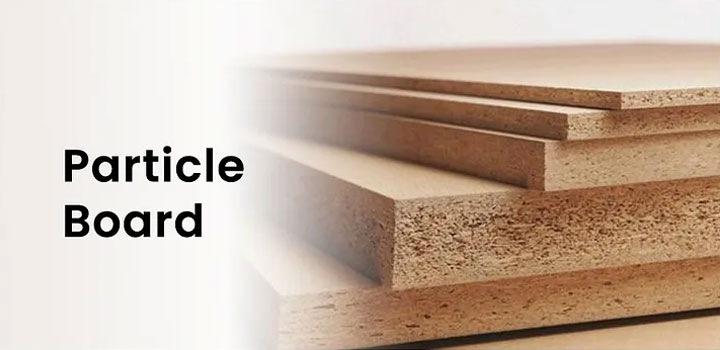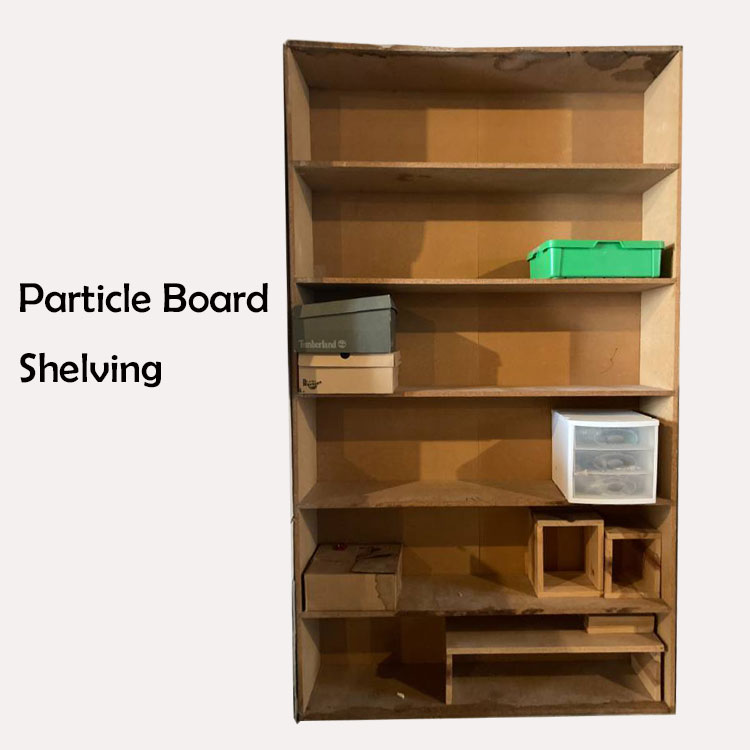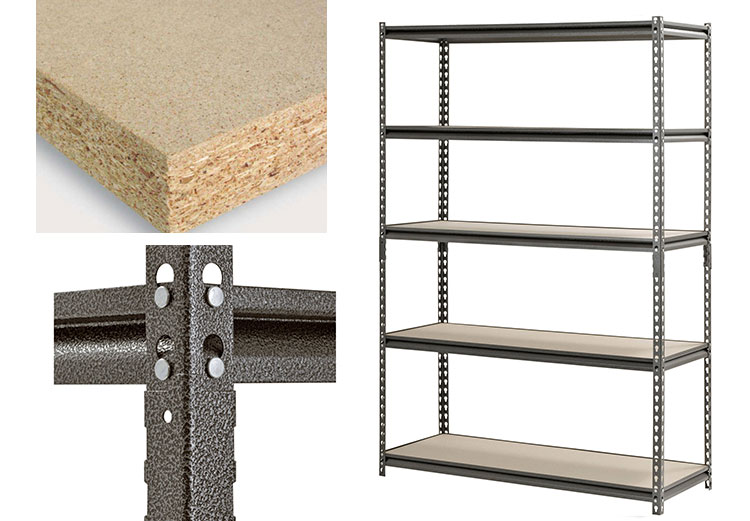Table of Contents
Main Tips:
Particle board is an affordable option for shelving but comes with limitations.
Advantages: Cost-effective, easy to install, and versatile in finishes and sizes.
Disadvantages: Lower strength (32-45 lbs per shelf), prone to sagging under heavy loads, and sensitive to moisture.
Alternatives: Consider boltless or rivet shelving for higher load capacity, durability, and adjustable options.
When selecting shelving materials, particle board often comes up as an affordable and available option. But is it the right choice for your shelving needs? In this guide, we’ll explore the pros and cons of particle board shelving and highlight why boltless shelving and rivet shelving might be better alternatives.
1. What is Particle Board?

Understanding Particle Board: Particle board is an engineered wood product made from wood chips, sawdust, and a resin binder, pressed together under high heat and pressure. This results in a lightweight and cost-effective material commonly used in furniture and shelving.
2. Advantages of Particle Board Shelving
Affordability: One of the biggest draws of particle board is its cost. It’s significantly cheaper than solid wood or plywood, making it a budget-friendly option for many.
Ease of Installation: Particle board shelves are generally easy to install. They can be cut to size with standard woodworking tools and do not require specialized equipment for assembly.
Versatility: Available in various finishes and sizes, particle board can be used for a wide range of shelving projects, from bookcases to pantry shelves.

3. Disadvantages of Particle Board Shelving
Strength and Durability: Particle board is not as strong as plywood or solid wood. It has a lower Modulus of Rupture (MOR), meaning it can bend or break under heavy loads. Typically, particle board shelves can hold around 32 to 45 pounds per shelf, depending on the thickness and reinforcement (Home Guide Corner).
Moisture Sensitivity: The particle board is highly susceptible to moisture. It can swell, warp, and lose its structural integrity when exposed to damp environments (Hunker).
Longevity: Particle board furniture generally has a shorter lifespan compared to its counterparts. Edges can crumble and screws can become loose over time, especially with frequent use or heavy loads (Home Guide Corner).
4. Why Particle Board Shelving Frames Are Not Strong
Frame and Shelf Material: If both the frame and shelves of a shelving unit are made of particle board, it is definitely not strong. Particle board lacks the structural integrity required for heavy-duty use. It can easily sag or break, especially under significant weight.
5. Better Alternatives: Boltless Shelving and Rivet Shelving
Boltless Shelving and Rivet Shelving: These types of shelving units combine the best of both worlds—metal frames for strength and particle board shelves for affordability and ease of customization.
Pros of Boltless and Rivet Shelving:
– High Load-Bearing Capacity: Metal frames provide excellent support, allowing these shelves to hold significantly more weight than all-particle board units.
– Durability: The combination of metal frames and particle board shelves ensures a longer lifespan and better resistance to damage.
– Ease of Installation: These shelving units are designed for easy assembly. No bolts or screws are needed, making the setup quick and straightforward.
– Adjustable Layer Height: The shelves can be easily adjusted to different heights, offering flexibility for storing items of various sizes (Ana White).

6. Main Tips for Choosing Shelving
Assess Your Needs: Consider what you’ll be storing. For light to medium loads, particle board can be sufficient. For heavier items, boltless shelving or rivet shelving is a better investment.
Think About Environment: If the shelving will be in a humid or damp area, such as a basement or garage, opt for materials like metal or treated wood that resist moisture damage.
Plan for Longevity: While particle board is cheaper upfront, consider the long-term costs of maintenance and potential replacement. Investing in more durable materials might save money and hassle in the long run.
7. How to Strengthen Particle Board Shelving
Reinforce with Supports: To prevent sagging, add additional supports such as metal brackets or wooden strips underneath the shelves. This distributes the weight more evenly and reduces the strain on the particle board (Hunker).
Seal and Protect: Applying a suitable sealant can protect particle board from moisture. Sanding sealers and lacquers are effective options to enhance durability (Home Guide Corner).
Proper Load Management: Avoid overloading your particle board shelves. Stick to lighter items and distribute weight evenly across the surface to minimize bowing.
Conclusion
Particle board shelving offers a cost-effective solution for light to medium storage needs. However, its limitations regarding strength and moisture resistance are significant. For more robust and flexible options, boltless shelving or rivet shelving, which combine metal frames with particle board shelves, provide a superior alternative. These units offer high load-bearing capacity, durability, ease of installation, and adjustable shelving heights, making them an excellent choice for both home and business storage needs.
If you’re in the market for particle board shelving, boltless shelving, or rivet shelving, our company offers a wide range of products to meet your storage requirements. Contact us today to find the perfect solution for your home or business!
Post time: Jun-28-2024
